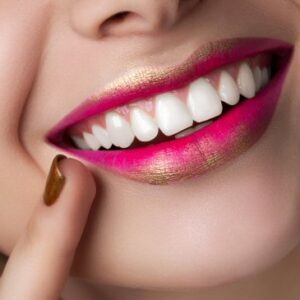Teeth Whitening

Professional Teeth Whitening in Mississauga | Brighten Your Smile Safely
Get a Brighter Smile with Professional Teeth Whitening
At Shahad Thomas Dental in Mississauga, we offer safe, effective professional teeth whitening treatments to remove stubborn stains and reveal a whiter, more confident smile. Unlike over-the-counter products, our dental-supervised whitening delivers noticeable results without compromising your oral health.
How Professional Teeth Whitening Works
Our advanced whitening treatments use gentle bleaching agents that:
✔ Penetrate tooth enamel to break up stains
✔ Lighten the dentin layer for lasting results
✔ Enhance enamel’s reflective properties
✔ Are safer and more effective than store-bought kits
Professional whitening typically lightens teeth 3-8 shades in just one visit!
Causes of Tooth Discoloration We Treat
☕ Food & Drinks: Coffee, tea, red wine, cola
🚬 Tobacco Use: Smoking or chewing tobacco
💊 Medications: Tetracycline or excessive fluoride
🦷 Aging: Natural yellowing over time
Are You a Candidate for Teeth Whitening?
Good Candidates:
✅ Healthy teeth and gums
✅ Realistic expectations (not all teeth whiten equally)
✅ No untreated cavities or gum disease
Not Recommended For:
❌ Pregnant or nursing women
❌ People with tooth sensitivity
❌ Those with gum recession or exposed roots
❌ Existing crowns/veneers (won’t whiten)
Our Professional Whitening Options
1. In-Office Laser Whitening (Power Bleaching)
60-minute treatment
Professional-strength bleaching gel
Laser-activated for faster results
Immediate whitening (up to 8 shades lighter)
2. Take-Home Custom Trays
Professional-grade whitening gel
Custom-fitted trays for even coverage
Gradual whitening over 2-4 weeks
Less sensitivity than in-office treatment
What to Expect During Treatment
Consultation – We examine your teeth and discuss goals
Preparation – Clean teeth and protect gums
Whitening – Apply gel (and laser if in-office)
Results – Noticeable improvement immediately or within weeks
Whitening Benefits vs. Risks
Benefits:
✨ Brighter smile in just one visit
✨ Boosts confidence for personal/professional life
✨ More affordable than veneers or crowns
✨ Safe when performed by dental professionals
Temporary Side Effects:
Mild tooth sensitivity (usually lasts 24-48 hours)
Occasional gum irritation
We provide desensitizing treatments to minimize discomfort
Maintaining Your Results
Avoid stain-causing foods/drinks for 48 hours
Practice good oral hygiene
Consider touch-up treatments every 6-12 months
Quit smoking to prevent new stains
Why Choose Our Mississauga Dental Clinic?
✅ Experienced cosmetic dentists
✅ Customized treatment plans
✅ Advanced laser technology
✅ Comfort-focused care
Book Your Whitening Consultation Today!
📍 Address: 3580 Thomas St. Unit 203, Mississauga, ON L5M 0G2
📞 Phone: (905) 285-0200
🌐 Website: shahadthomasdental.ca
Achieve a whiter, brighter smile safely with professional teeth whitening. Contact us today!
